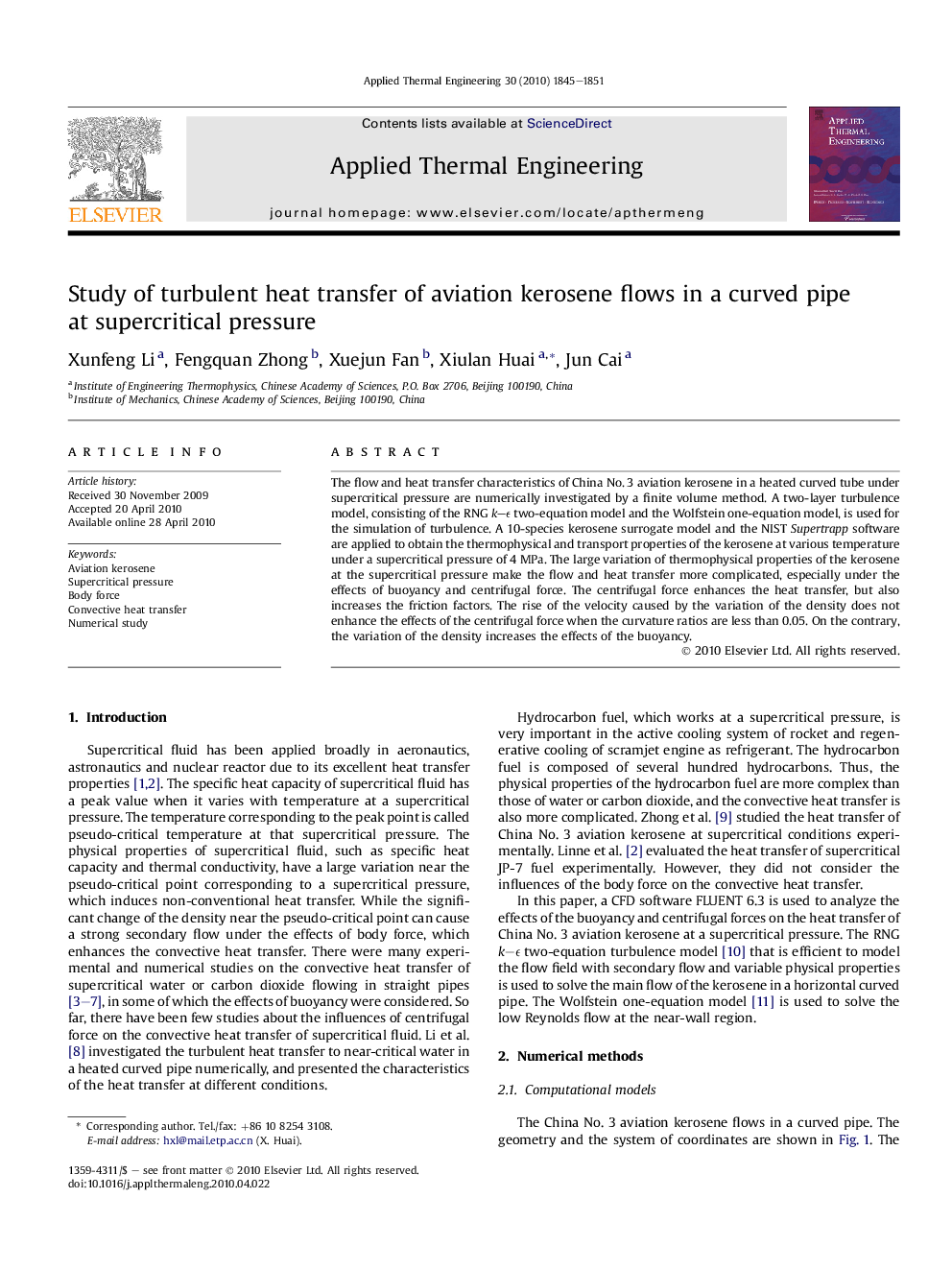| کد مقاله | کد نشریه | سال انتشار | مقاله انگلیسی | نسخه تمام متن |
|---|---|---|---|---|
| 648149 | 884613 | 2010 | 7 صفحه PDF | دانلود رایگان |

The flow and heat transfer characteristics of China No. 3 aviation kerosene in a heated curved tube under supercritical pressure are numerically investigated by a finite volume method. A two-layer turbulence model, consisting of the RNG k–ε two-equation model and the Wolfstein one-equation model, is used for the simulation of turbulence. A 10-species kerosene surrogate model and the NIST Supertrapp software are applied to obtain the thermophysical and transport properties of the kerosene at various temperature under a supercritical pressure of 4 MPa. The large variation of thermophysical properties of the kerosene at the supercritical pressure make the flow and heat transfer more complicated, especially under the effects of buoyancy and centrifugal force. The centrifugal force enhances the heat transfer, but also increases the friction factors. The rise of the velocity caused by the variation of the density does not enhance the effects of the centrifugal force when the curvature ratios are less than 0.05. On the contrary, the variation of the density increases the effects of the buoyancy.
Journal: Applied Thermal Engineering - Volume 30, Issue 13, September 2010, Pages 1845–1851